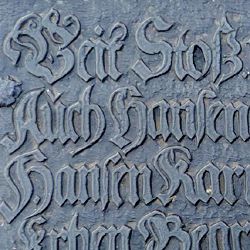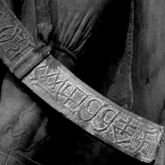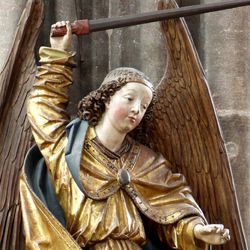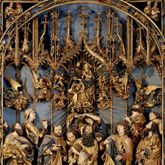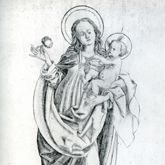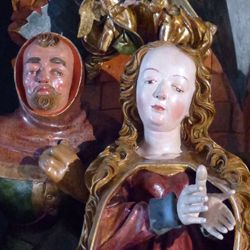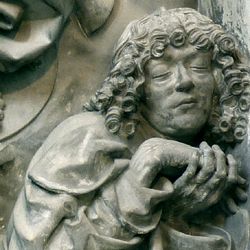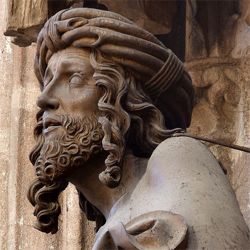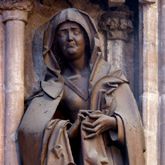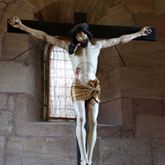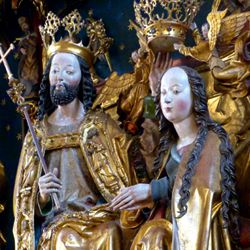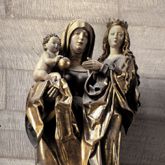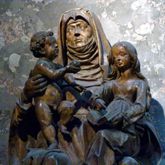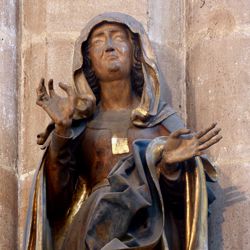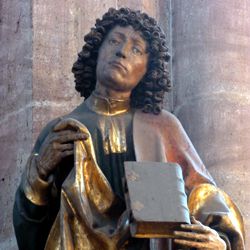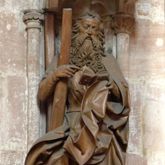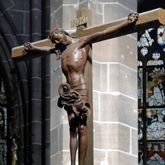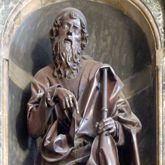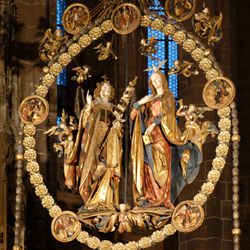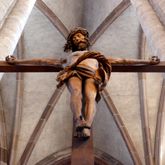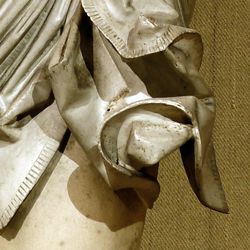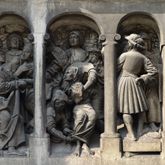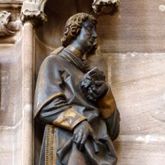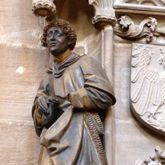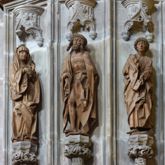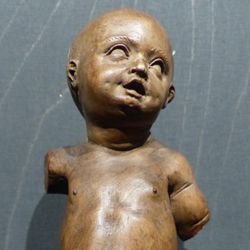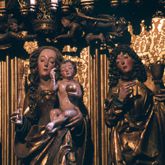Veit
Stoss
sculptor, carver
born Horb am Neckar, um 1447
died Nürnberg, 22. Sep 1533
Veit Stoss is famous as a sculptor and wood carver as well as graphic artist and painter of the German Late Gothic Epoch and one of its protagonists. Nothing is known about the time when he was trained, but the formative influence of Niclaus Gerhaert and the sculptural art of the area around the German city of Ulm. are quite evident in his works. In 1477 he gave up the Nuremberg citizenship and moved to Krakow.
In 1496 he acquired the Nuremberg citizenship again and moved back to Nuremberg. Stoss mainly worked as a wood carver on the main figures in the shrine of the Krakow altar that are clearly larger than life and were determined to be monumental three-dimensional sculptures carved in full detail right from the start of work. They are characterized by the boldness of composition and remarkable expressiveness. Carving them Stoss created expressive physiognomies and striking features for the figures of the saints which carry unmistakably his personal “stamp”.
The Annunciation by Veit Stoss is definitely the absolute highlight among all the Mariologic motifs (crowned madonnas in halos, rosaries) hanging down from the vaults which are widely spread especially in the Netherlands and in Northern Germany (Zoutleeuw, Kalkar, Aachen),
While his early works were mainly colored he later on worked without colorization if the contract allowed this thus creating masterpieces of wood sighted sculpture. His works are coequal with the finest works created at the time (Riemenschneider, the Erharts, Heinrich Douvermann, Evert van Roden). His style formed the basis for the art of Paul of Leutschau and thus enhanced the dissemination of the German Late Gothic in Upper Hungary.
Dr. Pablo de la Riestra
Style: Late Gothic
